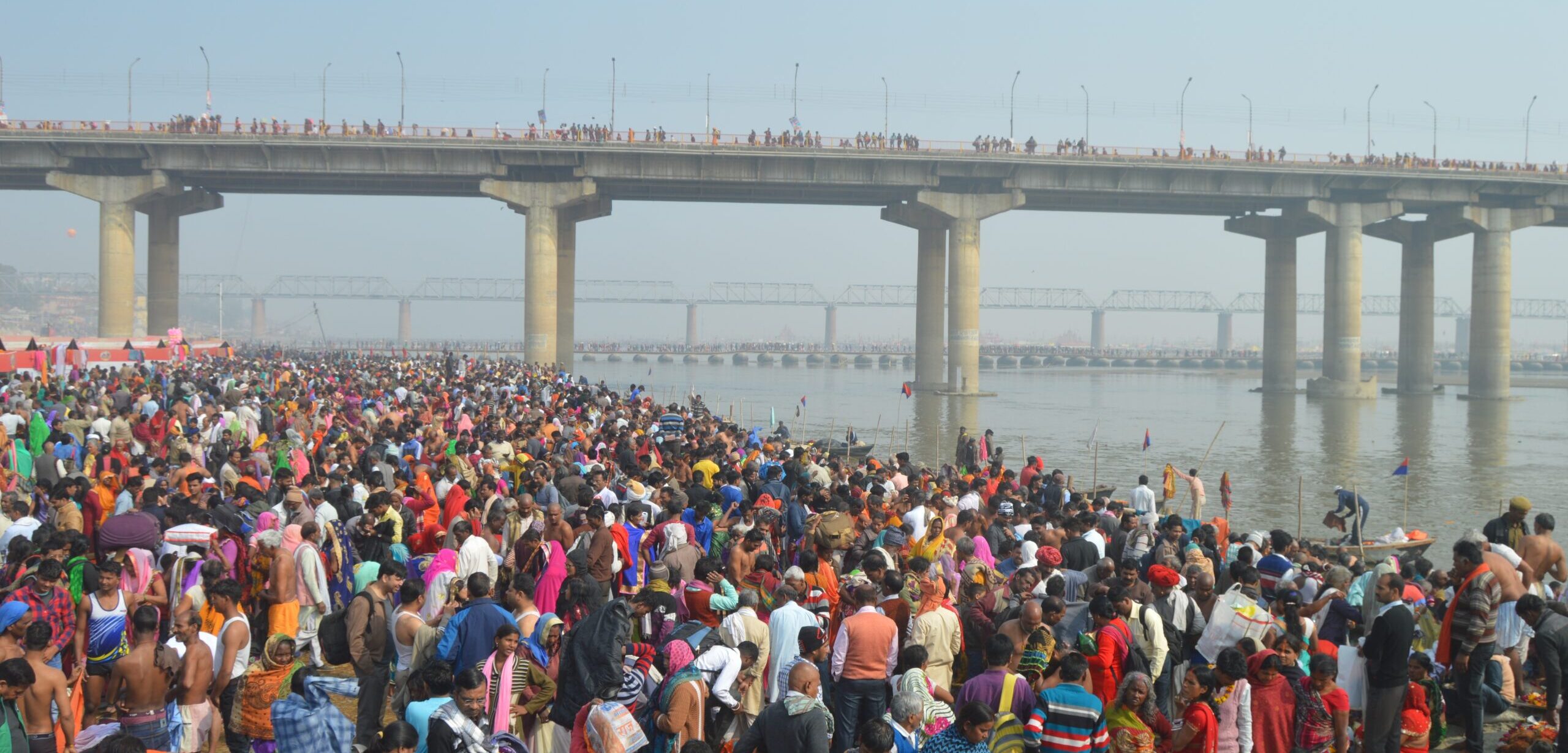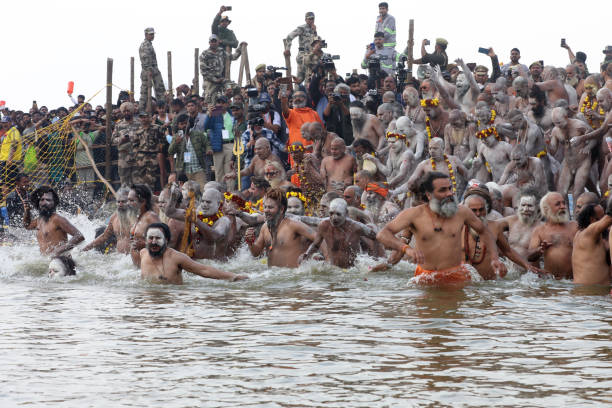Mahakumbh Mela : World’s Largest Spiritual Gathering
Mahakumbh Mela: The World’s Largest Spiritual Gathering

You May Like : Narendra Modi Life’s Journey
Introduction
Mahakumbh Mela is the world’s largest religious and spiritual gathering, attracting millions of devotees, saints, and tourists from across the globe. Held every 12 years, this grand Hindu festival is celebrated at four sacred locations in India: Prayagraj (Allahabad), Haridwar, Ujjain, and Nashik. The festival symbolizes faith, devotion, and the eternal quest for spiritual enlightenment.
Origins and Mythological Significance
The origins of Mahakumbh Mela trace back to Hindu mythology. According to legend, during the churning of the ocean (Samudra Manthan) by the gods and demons, a pot (Kumbh) containing the nectar of immortality emerged. To prevent the demons from obtaining it, Lord Vishnu carried the Kumbh across the heavens, spilling drops of nectar at four locations: Prayagraj, Haridwar, Ujjain, and Nashik. These sites became the sacred venues for the Kumbh Mela, where millions gather to purify their souls by bathing in the holy rivers.
Types of Kumbh Mela
Mahakumbh Mela is one of four types of Kumbh Mela, each with its unique significance and periodicity:
- Mahakumbh Mela – Held every 12 years at Prayagraj, considered the most auspicious.
- Purna Kumbh Mela – Occurs every 12 years at all four locations in rotation.
- Ardh Kumbh Mela – Celebrated every six years at Prayagraj and Haridwar.
- Kumbh Mela – A smaller version held every three years at different locations.
The Sacred Bathing Ritual
The most important ritual of Mahakumbh Mela is the Shahi Snan (royal bath). Devotees believe that taking a dip in the holy rivers—Ganga, Yamuna, and the mythical Saraswati—washes away sins and leads to Moksha (liberation from the cycle of rebirth). Akharas (sects of Hindu ascetics) and Naga Sadhus (naked ascetics) lead the bathing processions, making it a grand spectacle.
Astrological Significance of Mahakumbh Mela
Mahakumbh Mela is scheduled based on astrological calculations. The event takes place when Jupiter enters Aquarius and the Sun enters Aries. The alignment of celestial bodies is believed to enhance the spiritual energy at the festival sites, making it the perfect time for purification and penance.
Major Attractions and Events
Mahakumbh Mela is not just about bathing rituals; it hosts a variety of events that attract people from all walks of life:
- Religious Discourses: Renowned spiritual leaders and saints deliver sermons on Hindu philosophy and the essence of life.
- Processions of Akharas: Naga Sadhus, with ash-covered bodies and tridents, march through the streets, chanting sacred hymns.
- Yogas and Meditation Camps: Sessions promoting physical and spiritual well-being are organized for devotees and tourists.
- Cultural Performances: Traditional music, dance, and folk performances highlight India’s rich cultural heritage.
- Charitable Activities: Mass food distribution, medical aid camps, and social service initiatives are conducted.
Significance of Akharas in Mahakumbh Mela
The Akharas, or Hindu monastic orders, play a central role in Mahakumbh Mela. These sects represent different philosophies and traditions within Hinduism. The major Akharas include:
- Juna Akhara – The largest and most influential, known for its Naga Sadhus.
- Mahanirvani Akhara – Focuses on spiritual discipline and meditation.
- Niranjani Akhara – Promotes knowledge and scholarly discussions.
- Atal Akhara – Engages in humanitarian activities. The Akharas maintain the sacred traditions of Hinduism and serve as spiritual guides to the masses.

Global Influence and Recognition
Mahakumbh Mela has gained international recognition, drawing scholars, photographers, and tourists from around the world. The festival has been documented by leading global media outlets and even recognized by UNESCO as an Intangible Cultural Heritage of Humanity.
Modern-Day Mahakumbh Mela : Organization and Management
With millions of visitors attending Mahakumbh Mela, massive infrastructure and security arrangements are required. The Indian government collaborates with various agencies to ensure the smooth functioning of the festival. Some key aspects include:
- Sanitation and Hygiene: Mobile toilets, waste management, and clean drinking water facilities.
- Medical Facilities: Temporary hospitals and emergency services for health and safety.
- Security Measures: Deployment of police, surveillance drones, and crowd management strategies.
- Accommodation: Tents, hotels, and temporary shelters to accommodate pilgrims and tourists.
Challenges Faced Despite its grandeur, Mahakumbh Mela faces several challenges:
- Overcrowding: Managing millions of pilgrims requires extensive planning.
- Environmental Impact: Waste disposal and pollution in the rivers remain concerns.
- Health Risks: The large gathering increases the risk of disease outbreaks. However, authorities continue to improve measures to ensure a safe and successful event.
Conclusion
Mahakumbh Mela is not just a religious festival; it is a testament to India’s spiritual heritage, cultural diversity, and organizational capabilities. It embodies faith, devotion, and the pursuit of enlightenment. Whether for religious purposes or sheer curiosity, experiencing Mahakumbh Mela is a journey into the heart of India’s spiritual essence.
Weird to the wonderful – if you wanna know, we’ve got it covered!
Our Website Link : www.youwannaknow.info
Canadian Federal Election : Process, History, and Impact
[…] You May Like : MahaKumbh Mela : World Largest Event Ever […]